Review: Spy Web
Publisher: Parker Brothers
Year: 1997
Players: 2
Tagline: THE GAME OF EAVESDROPPING, FINGER-POINTING & SPYING!
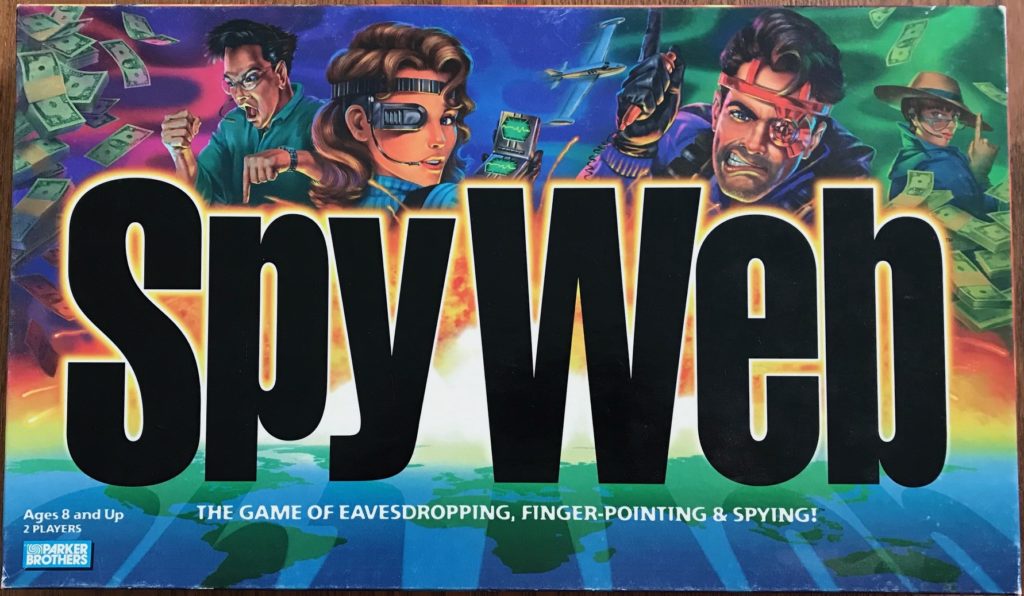
how we met
I picked up Spy Web at thrift a couple of years ago because of the fun cover (could the title be any larger????) and the fact that it’s two players. If you have read this blog before, then you probably already know I like deduction games. At least I like buying them.
how it plays
In Spy Web, you control one ring of spies and your opponent controls the other. Your goal is to try and deduce who your opponent’s Spy Leader is and where they are hiding before they get yours figured out. Rinse and repeat as many rounds as it takes for one player to collect $1,000,000 for the win!
To begin each player picks one of the plastic spy boards, one of the maps, their group of spies and the opponent’s group of suspects. The different groups are differentiated by color as well as type: the purple cards are all birds while the green cards are all sea creatures. You should have the spies from one and the suspects from another.
Shuffle your spy deck and choose one at random to be placed in the Spy Leader location on the top of your board. Next you will want to choose the location that your Spy Leader is in and indicate that by placing one of your pegs into the little black 3×3 quadrant. Finally, place all of your remaining spies onto the plastic board in any locations except the one the Spy Leader is in; that space must remain empty.
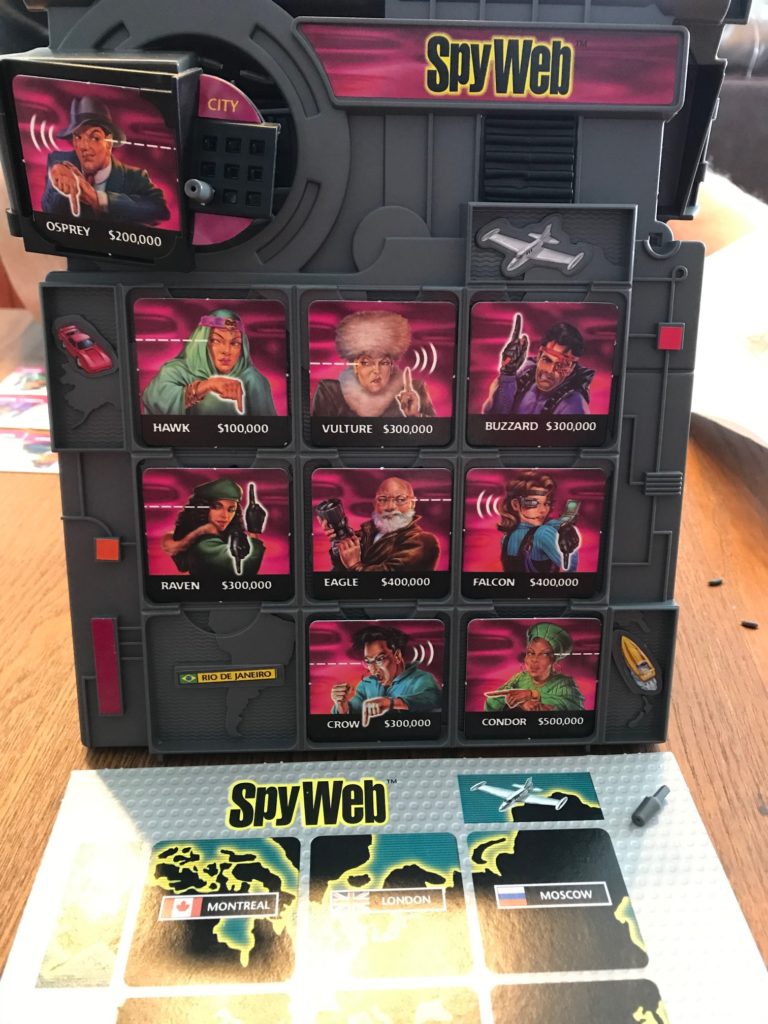
Players now take turns either asking a question or making an accusation. You will notice your suspects are doing one or more of the following: looking, listening and pointing. You can ask a question like, “What is Buzzard pointing to?” The other player can only respond with the name of a vehicle (if that spy is next to one of the three vehicles on the board), the name of a spy or nothing. In the image above, Buzzard is pointing to an airplane.
Any question asked about your Spy Leader would result in an answer of “Nothing.” If someone is pointing to, listening to or looking at the location that your Spy Leader is in the answer is also “Nothing.” This will be simple to track since that location is empty on your board, like Rio de Janeiro in photo above.
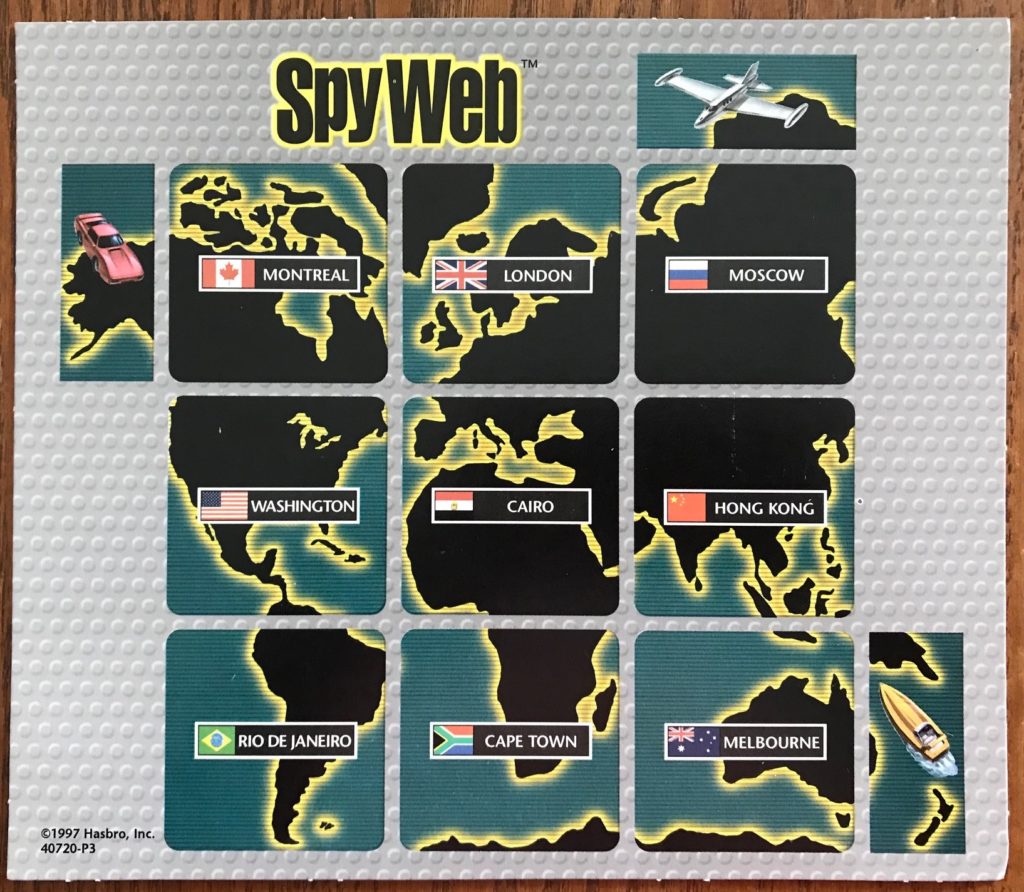
As you proceed you will start to deduce where your opponent’s spies are located with the ultimate goal of making an accusation that includes the name and location of their Spy Leader. Wrong accusations do not matter, you just used up your turn to make one. If someone correctly accuses, the opponent should swing their Spy Leader around to show the amount of bounty the other player receives.
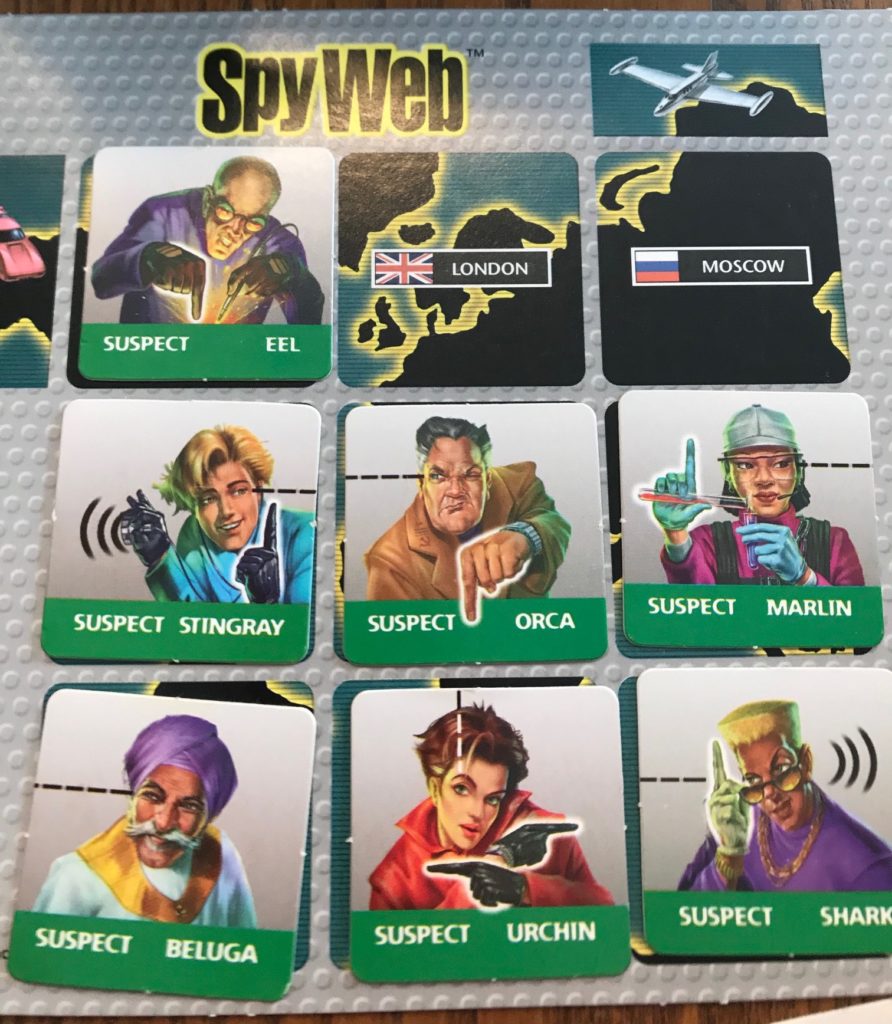
You can spend your money throughout the game by bribing your opponent to indicate which direction to answer for a suspect pointing two different directions (this seems extremely expensive to me and I can’t imagine doing it since there is only one suspect pointing two directions) or to take another turn.
Since the first player to $1,000,000 wins, several rounds will be played. Players are given $100,000 at the beginning of the game and the beginning of each round.
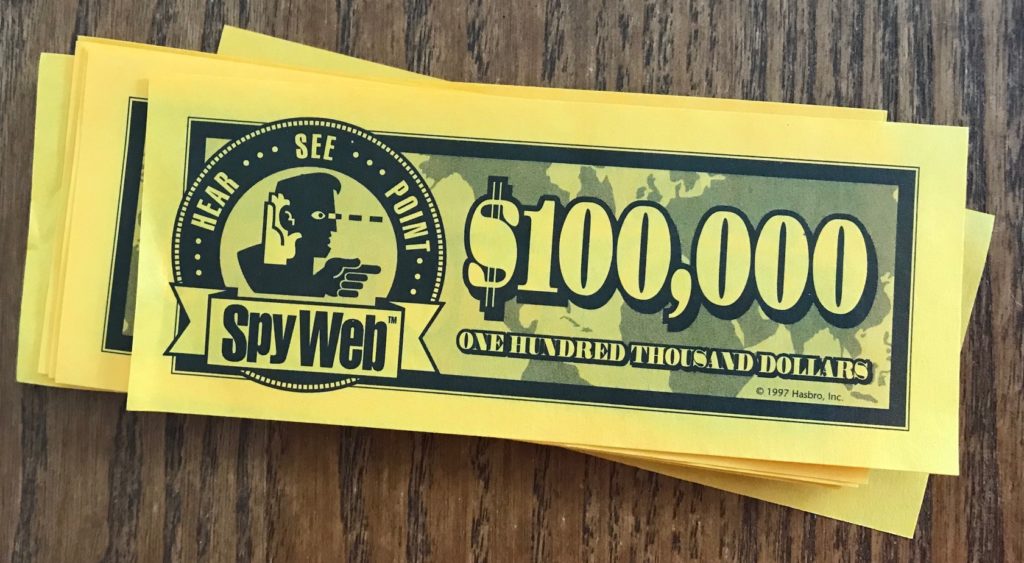
how it went
Bill and I played Spy Web one quiet Saturday afternoon after a pretty long period of not gaming. Quarantine has felt busy. I do okay with deduction games, but I am a terrible bluffer. You don’t exactly bluff in this game but a poker face is still helpful if you are getting asked about your Spy Leader.
I felt pretty good about my side of the board being very hidden. You can move around enough that I don’t think the other player can easily tell which location you leave empty, where your peg goes, etc. We hooded our eyes when answering questions for added security.
The spies have a nice balance with their abilities so that the game is not overly simple or complex.
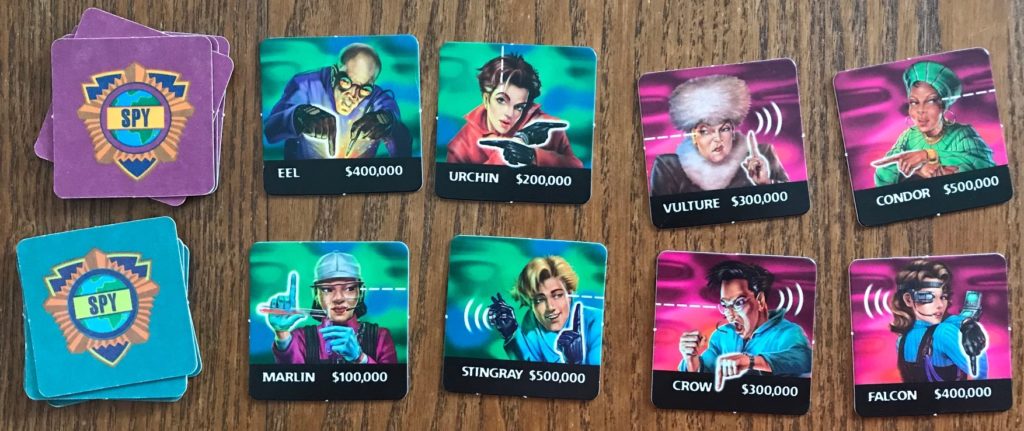
We played maybe four or five rounds. I spent the first couple of rounds being pretty random with my placement of spies. Then I spent a couple of rounds being deliberate about where I put specific spies (after randomly choosing Spy Leader, of course) to try and add confusion. The latter approach seemed to make a big difference. Either way, you have to do the deduction work and not make assumptions to narrow everything down into guessable territory. But if you are careful in setting up your spies you can prolong your opponent’s ability to deduce your details.
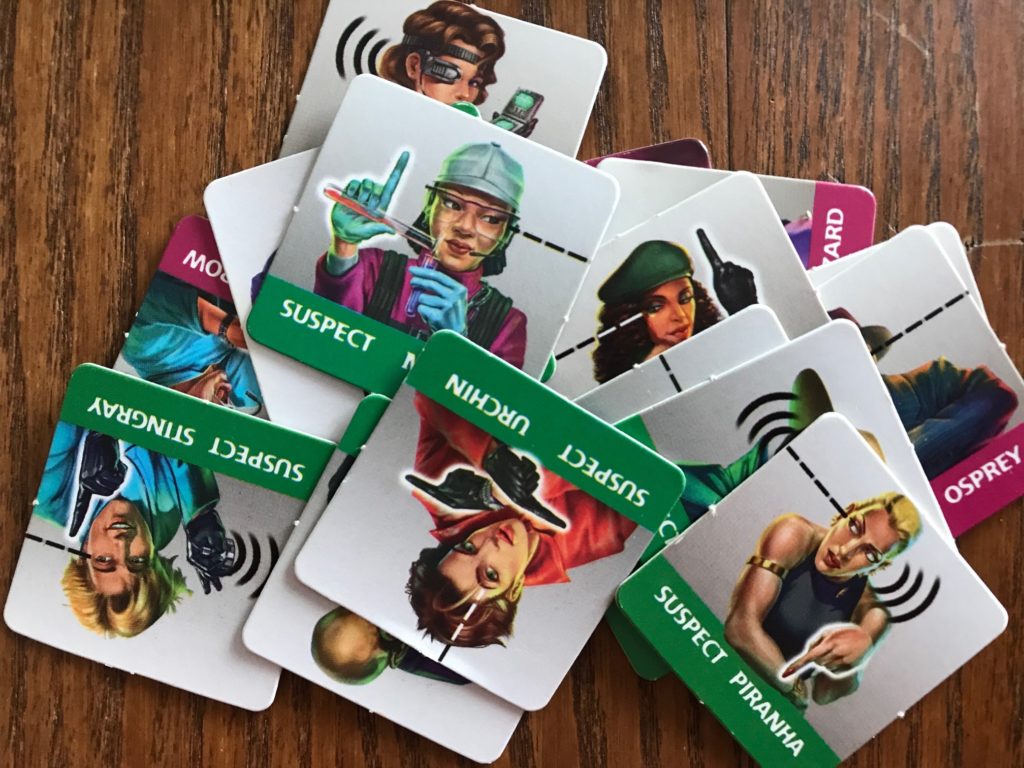
Bill easily won the first couple of rounds. He also had the bad luck of getting some low-bounty Spy Leaders from me. I won the next rounds with decent returns and I won Spy Web!
There’s always types of games that a person may not enjoy. Bill explained after we played that he does not enjoy that type of deduction game. He understands how to accomplish the goal, but it feels like tedious work to him. I, on the other hand, love this type of deduction game. It reminds me a little bit of a Zebra puzzle.
One of my all-time favorite, best-ever, loved-it-the-most iPad games was called Riddle of the Century (previously called Einstein’s Riddle of the Century). Don’t bother looking for it; it’s been off the app store for years now. But I happily spent hours and hours and hours getting gold stars on every single puzzle. I love these all-consuming logic games. I have done many a Nonogram in quarantine. I think it’s logical (ha! get it?) that my leaning toward these games also makes me appreciate Spy Web. And I can understand why some people would not appreciate it.
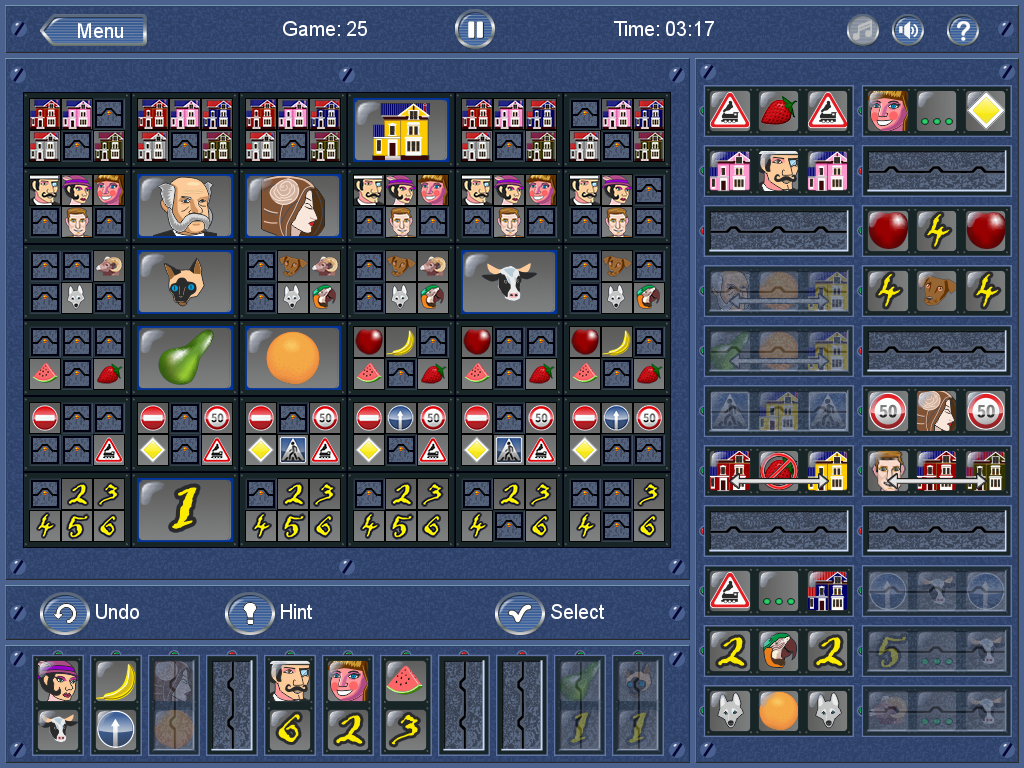
play or pass
Play. Spy Web is a fun game in a genre that I have a particular weakness for. Gameplay is simple enough, but be careful! If you are not vigilant you can get confused and end up with suspects in the wrong locations on your map. The difficulty goes up if you plan your spy locations well. For a more casual game just randomly place your spies.
I have not thrifted in a year now (ahhh!) but I have seen Spy Web three times in total. So it’s out there at thrift if you are patient. And if you are not patient, treat yourself to one of the bazillion copies online.